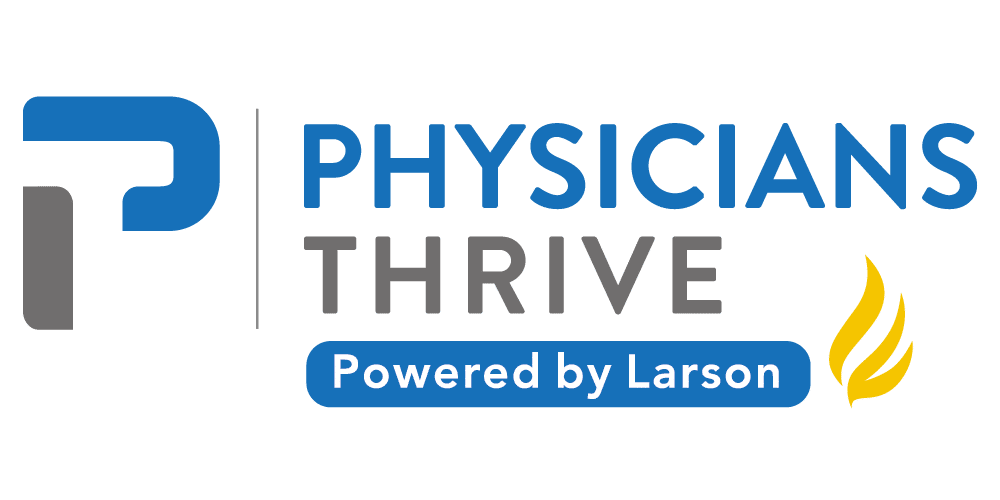Physician mortgages are loans designed to make homeownership possible even for new doctors and medical residents.
Most doctors make serious financial sacrifices for their career path, including taking on an average of $190,000 in student debt and forgoing a full salary in their early adult life. Typically, this financial situation (high debt, little savings, short credit history) would make it very difficult to be approved for a home loan.
However, mortgage companies recognize that most young doctors will have stable employment in their field. And earn above-average salaries. As a result, even physicians in training tend to be a very good lending risk. To accommodate doctors’ unique financial situation, many lending companies offer special physician mortgage rates.
Table of Contents
How is a Physician Mortgage Loan Different?
There are a few benefits that come with a physician’s mortgage. Typically, a physician mortgage will allow doctors to pay between 0-10% of the down payment on a house. Without paying for Private Mortgage Insurance (PMI).
While a reduced or waived down payment is the most significant perk of a physician home loan, there are several other unique features. For a conventional mortgage, most lenders require proof of income history. Which may not be possible for most residents and medical students. As a result, many lenders will allow doctors to close on a home even before they begin earning a full salary. If you can provide evidence of an employment contract that starts within 60-90 days, they can still approve you for a physician mortgage.
Additionally, most physician mortgage rates will omit student debt when calculating your debt to income ratio.
Related Provider Reviews: NEO Home Loans and Mutual of Omaha Mortgages
Should I Take Advantage of Physician Mortgage Loan Rates?
While a doctor-specific home loan can certainly make home-buying easier for a cash-strapped resident, these physician mortgages come with advantages and disadvantages. Depending on your financial situation.
Advantages of physician loan rates for residents:
- You don’t have to worry about PMI. For conventional mortgages, borrowers who put less than 20% for the down payment must pay for additional Private Mortgage Insurance (PMI). PMI can easily cost up to $300 per month on top of your monthly mortgage payment. In the case of physician home loans, however, they may waive PMI regardless of the down payment amount. Therefore, with no PMI requirements, there is less financial incentive to make a large initial down payment on your home.
- You can get a better rate of return investing outside of real estate. If you have enough savings to make a down payment on your home, you can use that money to take advantage of other investment opportunities. By avoiding a hefty down payment, you can put your money into stocks, mutual funds, or similar investments. Which will yield more money in the long run.
- You maintain liquid savings for emergencies. Compared to other professionals of the same age, physicians often have significantly less emergency savings. Because they enter the workforce nearly a decade later. Instead of tying up all your savings in a large down payment, accepting a physician home loan will allow you to keep your savings available in case of a financial emergency.
Disadvantages of physician loan rates for residents:
- It will take longer to build equity in your home. If you plan on moving again in a few years for residency or job opportunities, a physician home loan could be a setback when it’s time to sell. As a general rule, they recommend that homeowners stay in a home for at least 3-4 years in order to pay down their loan balance and give the property value time to increase. This advice is even more important for doctors who use a physician home loan. Without a significant down payment, you will have paid even less towards the total balance of your home loan and therefore it will take more time to build equity in the property.
- You may have higher interest rates. In many cases, the interest rates and fees of a physician home loan will be slightly higher than those of a conventional loan. For some doctors, these higher interest rates are well worth the savings on a down payment and PMI costs. However, it is important to factor the ongoing cost of interest into your long-term budget.
- They may tempt you to buy outside your price range. Because lenders tend to view physicians as such good credit risks, they will often approve loans even for exorbitantly expensive homes. It is important to remember that the amount of money a bank will lend you for a home loan is not a good indicator of what you can afford. Consult a financial advisor to determine what you can realistically afford, and then stick to your budget even if you get a physician mortgage.
The Final Word on Physician Home Mortgage Loans
With special rates on home loans for doctors, physician mortgages allow medical residents to maintain their loan obligations and pursue other financial goals without sacrificing the dream of owning a home.
Physician mortgages are typically best suited for first-time homebuyers with limited savings. As doctors advance in their careers and increase their savings, a conventional mortgage with lower interest rates may be more appropriate.
If you’re considering a physician home loan, talk with an advisor to develop a personalized budget and financial plan.
You might also be interested in our Disability Insurance Guide for Physicians.
Get Physician Specific Financial Planning
Work with advisors that know physicians.
Get Financial Planning
Need help with something else?
Get Free Disability Insurance Quotes
Get Your Contract Reviewed








































